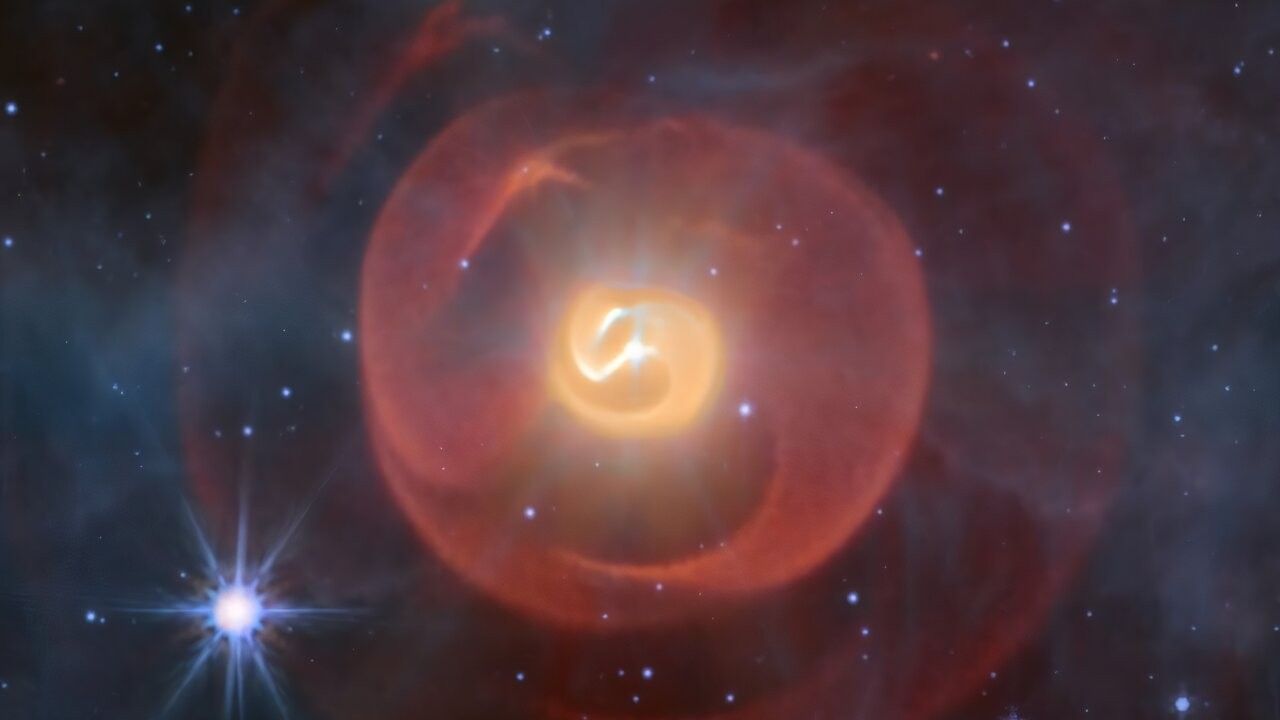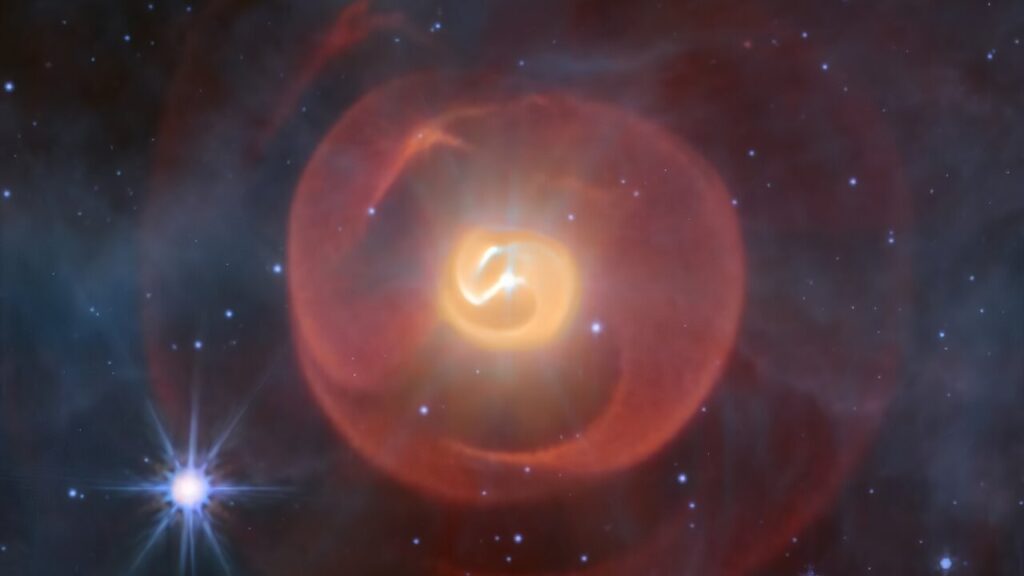
The James Webb Space Telescope has captured a stunning new image of two dying stars wreathed in a spiral of dust.
The highly rare star system is located some 8,000 light-years from Earth, within our Milky Way galaxy. Upon its discovery in 2018, it was nicknamed Apep, after the ancient Egyptian serpent god of chaos and destruction, as its writhing pattern of shed dust resembles a snake eating its own tail.
Now, a new image taken by the James Webb Space Telescope (JWST) has captured the system in unprecedented detail, revealing that it doesn’t contain just one dying star, but two — with a third star chomping on their dust shrouds. The researchers published their findings July 19 in two papers on the preprint server arXiv, and they have not been peer-reviewed yet.
“We expected Apep to look like one of these elegant pinwheel nebulas,” study co-author Benjamin Pope, a professor in statistical data science at Macquarie University in Sydney, wrote in The Conversation. “To our surprise, it did not.”
Nebulas such as these are formed by Wolf-Rayet stars. These rare, slowly dying stars have lost their outer hydrogen shells, leaving them to spew gusts of ionized helium, carbon and nitrogen from their insides.
Wolf-Rayet stars explode as supernovas after a few million years of sputtering, at most. But until then, the radiation pressure from their light unfurls their innards, stretching them out into giant phantom jellyfish in the night sky.
Related: Space photo of the week: James Webb telescope reveals mysterious ‘light echo’ in the broken heart of Cassiopeia
These superheated contents, especially carbon dust that is later recycled into planets and the material in our own bodies, is so hot that it glows brightly in the infrared spectrum. By capturing these infrared photons with the Very Large Telescope in Chile, astronomers got their first peek at the system in 2018.
Now, by training JWST’s sensitive Mid-Infrared Instrument on Apep, the team has captured it in even more detail, revealing it to be even more unusual than first thought.
“It turns out Apep isn’t just one powerful star blasting a weaker companion, but two Wolf-Rayet stars,” Pope wrote. “The rivals have near-equal strength winds, and the dust is spread out in a very wide cone and wrapped into a wind-sock shape.”
Making the situation even more complex is a third star — a stable giant that’s carving out a cavity in the dust spit out by its dying siblings.
Beyond making for a stunning picture, Pope said, studying Apep could tell us more about how stars die and the carbon dust they leave behind.
“The violence of stellar death carves puzzles that would make sense to Newton and Archimedes, and it is a scientific joy to solve them and share them,” Pope wrote.
